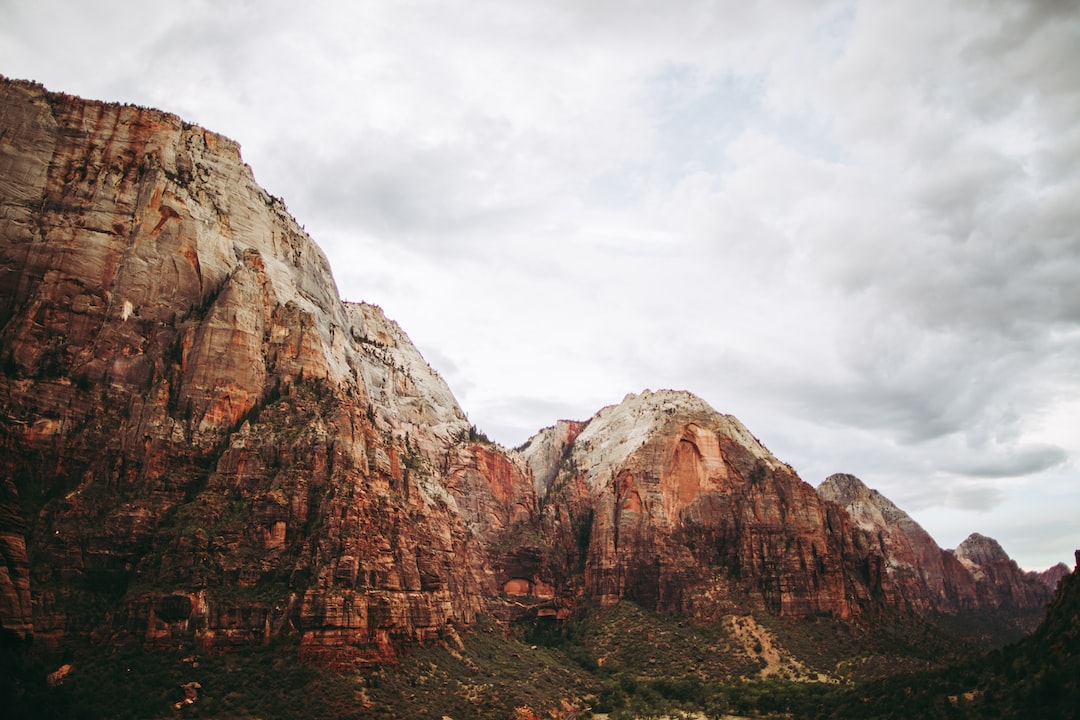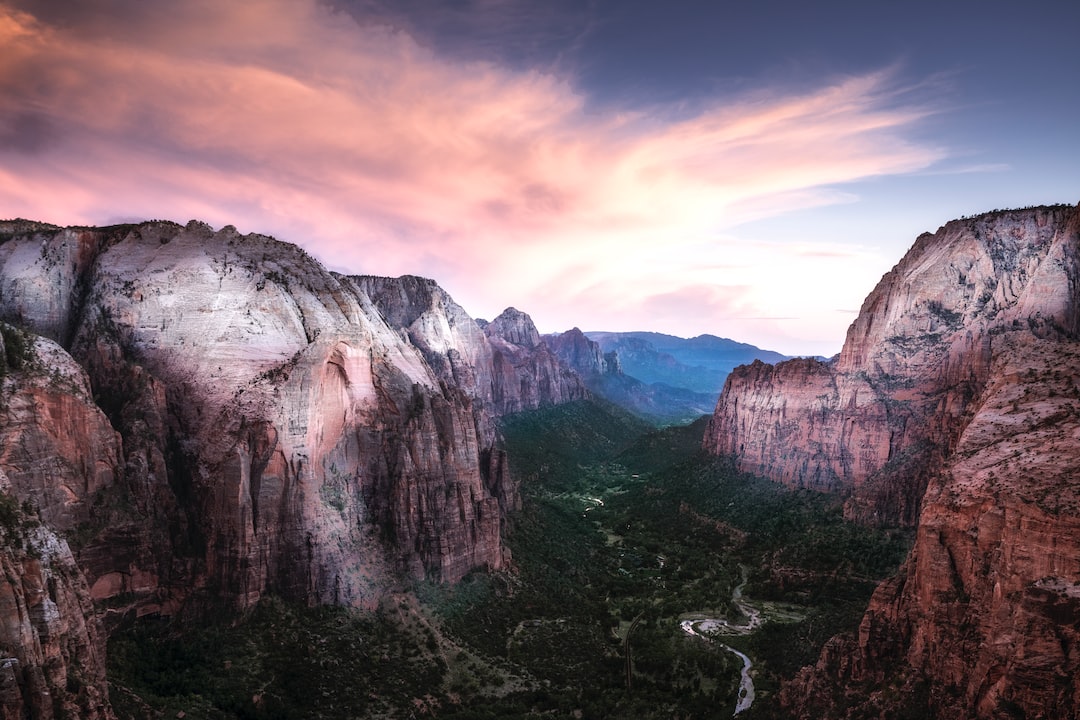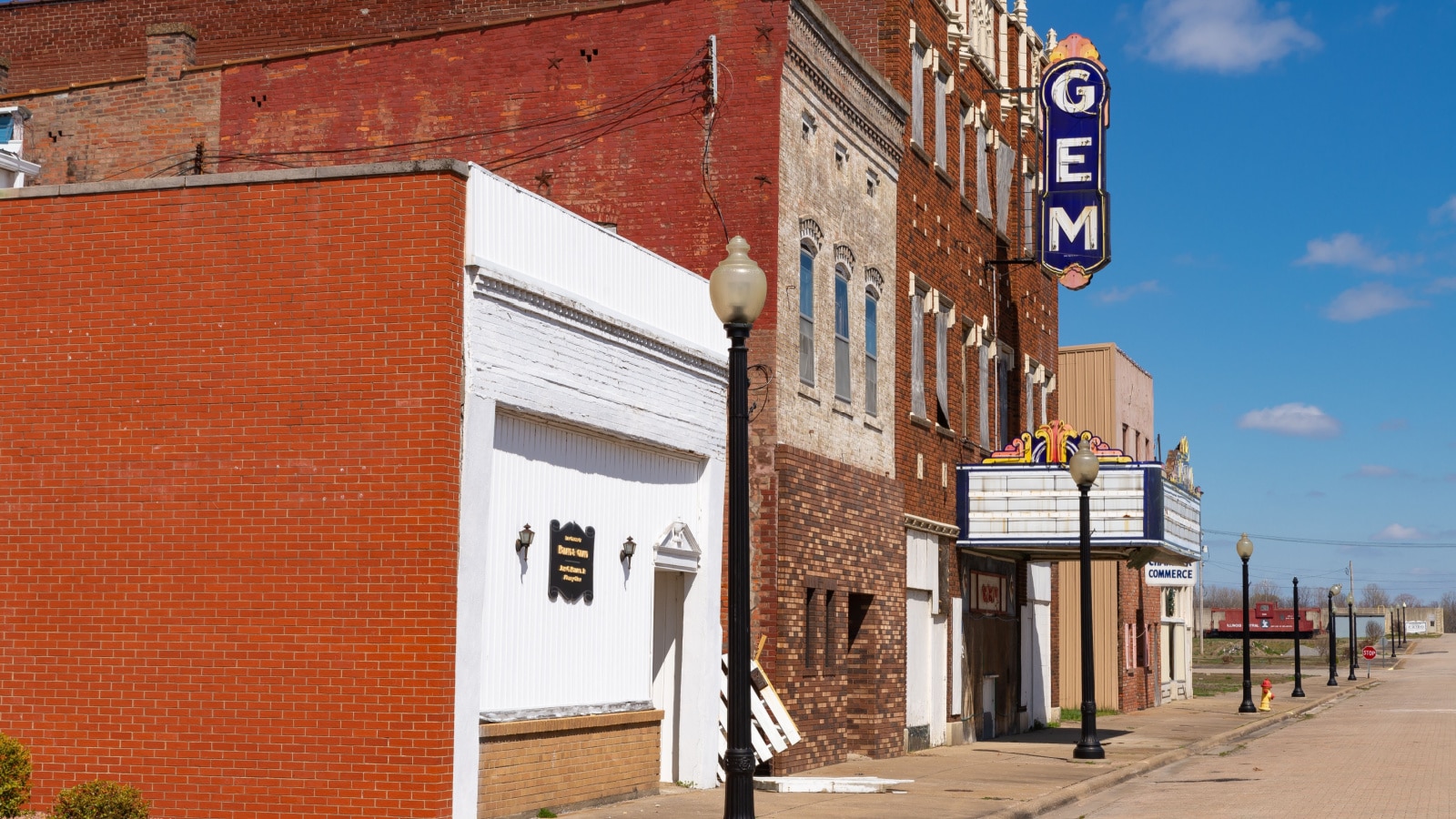The enchanting landscape of Zion National Park often leaves visitors in awe, with its sheer cliffs, rugged terrain, and a wide array of flora and fauna. Deciding on the best time to visit this stunning national park can be a major factor in experiencing everything it has to offer. A month-by-month breakdown is essential in planning an optimal trip to this idyllic destination.
The ideal time to visit Zion National Park is from April to October, as it offers mild weather and low precipitation. For fewer crowds, opt for late-April or September. Expect high temperatures in July and August. For cooler weather and stunning fall foliage, late October is a great time, but some park facilities may be closed.
January: A Chilly Start to the Year
What better way to begin the year than by exploring the serene trails of Zion National Park? In my experience, visiting in January can be rewarding if you’re well-prepared for the nippy and occasionally snowy conditions. During this month, temperatures hover around 33°F to 54°F, making suitable clothing crucial to your enjoyment. Zion National Park’s website offers detailed information on wearing the appropriate attire and staying safe during your visit.
Are there any benefits to visiting in February?
Undoubtedly, there are advantages to visiting Zion National Park in February. Although the temperatures remain frosty – ranging between 37°F and 59°F – this month sees a gradual decrease in the likelihood of snowfall. This weather allows for increased accessibility to certain trails, providing avid hikers a breathtaking view of the snow-laden cliffs. The Dyrt provides additional guidance on exploring the park during this time.
 March: The Beauty of the Spring Transition
March: The Beauty of the Spring Transition
March offers the delightful transition from winter to spring, with temperatures scaling between 44°F and 66°F. This warming weather signals the awakening of the park’s flora, offering a captivating visual treat for visitors. However, be prepared for occasional rainfall and frequent windy conditions, both of which are common during March. It is essential to keep an eye on the weather forecast to make the most of your experience – particularly for campers seeking overnight stays.
Does April See a Surge in Visitor Numbers?
As temperatures continue to rise during April, ranging from 50°F to 75°F, Zion National Park starts to attract more visitors. The blooming of wildflowers such as the desert paintbrush and Utah penstemon offers a vibrant display of biodiversity, adding to the appeal of the park. Despite escalating visitor numbers, there are still plentiful chances for quiet moments of serenity as you traverse the park’s vast expanse.
May: Time to Witness the Park’s Full Bloom
Blessed with temperatures between 58°F and 86°F, May is an ideal month for those looking to enjoy Zion National Park in full bloom. Spring runoff from melting snow makes waterfall viewing particularly spectacular during this month. However, keep in mind that the higher water levels can render some trails – such as the Narrows – less accessible.
June: Embrace the Warmth and Abundant Sunlight
June marks the beginning of summer in Zion National Park, with temperatures ranging from 66°F to 95°F. The warm weather offers visitors the perfect opportunity to embark on extensive hikes and participate in outdoor activities such as rock climbing and canyoneering. Keep in mind that higher temperatures demand excellent hydration practices and sun protection. Also, pack a rain jacket, as June often witnesses afternoon thunderstorms.
July: The Peaks of Summer Heat and Monsoonal Rains
July is the warmest month in Zion, with temperatures stretching between 73°F and 100°F. The heat can make strenuous hikes challenging, so plan your visit accordingly. Towards the end of July, the monsoonal season begins, causing heavy rainfall and flash floods. Extra caution should be exercised during this time, especially when hiking in slot canyons or river trails. Despite the heat, July offers longer daylight hours to enjoy the park’s majestic beauty.
August: Navigating the Thunderstorms and Crowds
During August, temperatures remain high, averaging between 71°F and 97°F. Monsoonal rainfall is still a prominent feature this month, so ensure you’re well-prepared for potential weather disruptions. As one of the most popular months to visit Zion National Park, be prepared for large crowds and limited availability in campgrounds and park accommodations. Advanced reservations are highly recommended in this peak season.
September: Welcoming the Fall Season
With temperatures cooling down to a range of 63°F to 88°F, September is an ideal month for those looking to avoid the extremes of summer heat. The park remains busy during this month but experiences a decrease in crowds as children return to school. The fall season’s onset offers spectacular displays of changing foliage, with vibrant shades of red, orange, and yellow taking center stage in this natural wonder.
October: Delight in the Tranquil Fall Atmosphere
October offers mild temperatures, between 52°F and 77°F, and fewer visitors, creating a serene environment for those who choose to visit Zion National Park during this month. Witnessing the autumn foliage transform the landscape and taking in the crisp, cool air make this an opportune time to hike and explore, with almost all trails remaining open and accessible.
November: Prepare for Cooler Adventures
As November approaches, Zion National Park starts to cool down, with temperatures ranging between 40°F and 62°F. The decrease in temperature results in fewer crowds, providing visitors with more solitude on the park’s trails. However, it is crucial to be prepared for variable weather conditions, as colder temperatures and occasional snowfall may impact trail access and overall accessibility.
December: Experience the Magic of a Wintry Zion
December in Zion National Park is often characterized by cold temperatures, hovering between 33°F and 52°F, and infrequent snowfalls, creating a peaceful and unique experience for visitors who choose to explore the park during this time. Although some trails may be closed or harder to access due to snow and ice, winter visitors can delight in the stunning contrast between the park’s white blanket and the red cliffs, producing an almost otherworldly atmosphere.
The best time to visit Zion National Park largely depends on your personal preferences, tolerance to weather conditions, and desired activities. While each month offers a unique perspective on the park’s beauty, ensure you are well-prepared for your adventure by researching trail conditions, weather forecasts, and making appropriate reservations. No matter when you choose to visit, Zion National Park’s astounding beauty will undoubtedly leave a lasting impression.
Best Time to Visit: A Month-to-Month Verdict
Different factors, including weather, crowds, and natural displays, can all contribute to what may be considered the best time for you to visit. Let’s evaluate each of these aspects in order to determine an ideal time based on personal preferences.
Weather–Related Peaks and Troughs
For some, pleasant weather and comfortable temperatures are paramount for enjoying nature at its finest. To avoid extreme heat or cold, the months of April, May, September, and October offer mild climates and optimal hiking conditions. However, always keep in mind that varying weather conditions can still occur during these months, making it necessary to check forecasts and come prepared regardless of your chosen travel time.
Managing the Crowds: Going off the Peak Season
Large crowds can often prove to be a distraction for those who want to immerse themselves in nature, seeking solitude and tranquility. To escape the bustling peak season, consider visiting the park in January, February, November, or December. Despite providing colder temperatures, these months allow you to appreciate the beauty of Zion National Park while experiencing a sense of seclusion.
Nature’s Displays: Spring Flowers and Fall Colors
If witnessing the captivating visual spectacles provided by nature is a priority for your trip to Zion National Park, consider visiting during the months where the park is in full bloom. For spring enthusiasts, April and May offer the chance to observe wildflowers flourishing throughout the park. Alternatively, the autumn months of September and October provide breathtaking views of the changing foliage, as vibrant hues of red, orange, and yellow adorn the landscape.
The Ideal Balance: Uniting Best Conditions and Experiences
Taking into account all of the factors mentioned above, the months of April, May, September, and October potentially provide the best balance for most visitors. The combination of pleasant weather conditions, more manageable crowds, and nature’s beautiful displays make these months highly favorable for exploring Zion National Park. However, personal preferences inevitably play a significant role in determining the best time for your unique journey.
Tailoring Your Visit: Embrace the Unexpected
Lastly, remember that your Zion National Park adventure will ultimately be what you make of it. Being prepared for unforeseen obstacles and embracing unexpected experiences can lead to a truly memorable excursion in any month. Flexibility, open-mindedness, and curiosity are key ingredients in discovering the boundless wonders this incredible destination has to offer, regardless of the calendar.
In summary, the best time to visit Zion National Park is highly dependent on personal preferences and desired experiences. Whether you’re looking to bask in sunshine, beat the crowds, or marvel at nature’s changing landscapes, this month-by-month breakdown should assist you in determining the perfect time for your visit. But, above all, be ready to embrace the enchanting world of Zion National Park and create your own unforgettable memories.





